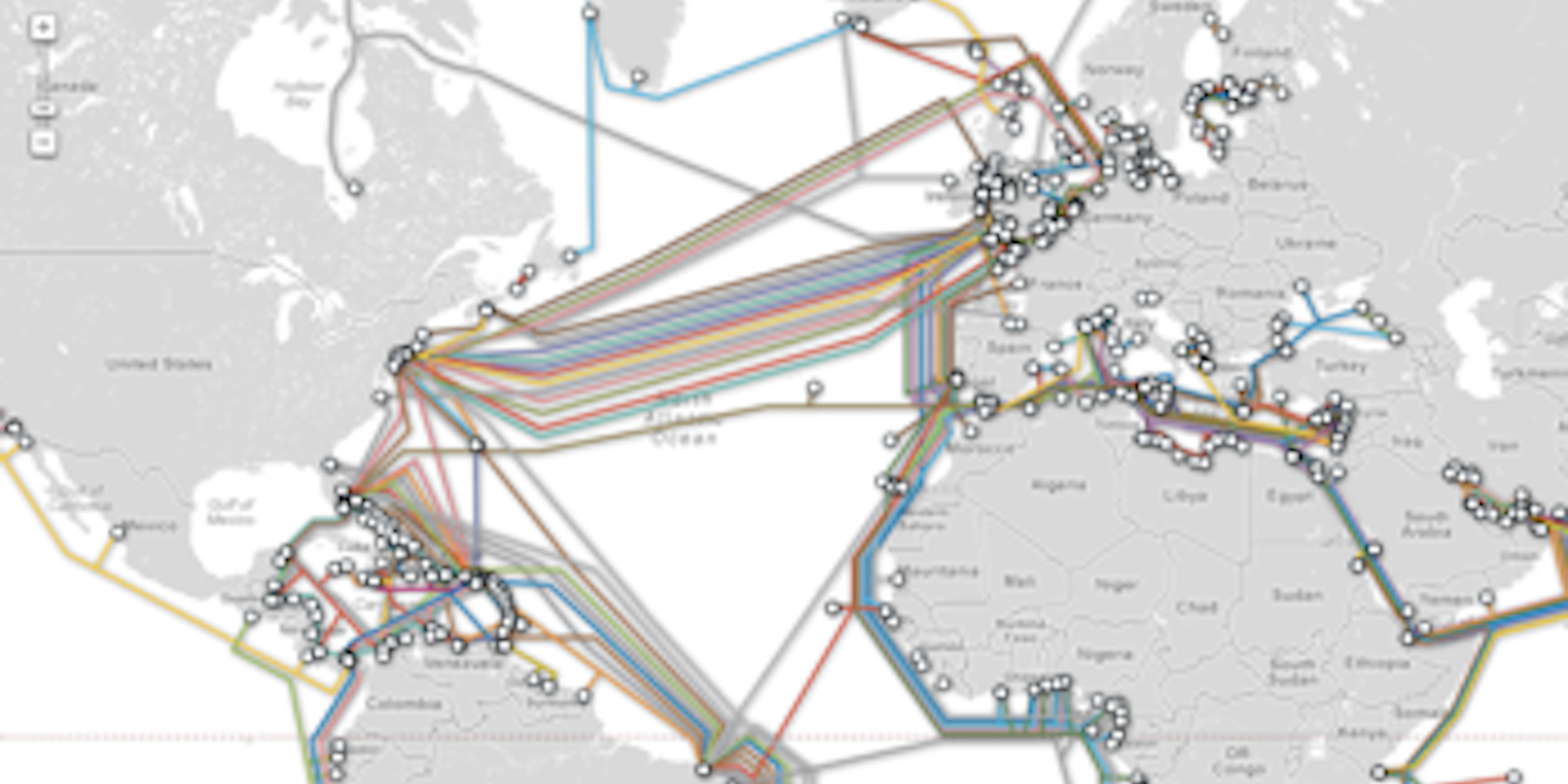Hidden behind the largest DDoS attack in history and the latest Qassam hack of a major financial institution lies the failure of a number of the undersea cables that carry so much of the world’s Internet traffic.
The Holland-centered DDoS attack in particular has been credited with slowing Internet traffic lately, especially in Europe. But the failure Wednesday of “South East Asia-Middle East-Western Europe 4” (SMW4), a cable that carries traffic between Europe and Asia—as well as a number of other cables in the last several weeks – may be more responsible.
On its blog, Internet traffic company Renesys’s Doug Madory writes, “While we’re hard-pressed to find evidence of the purported global Internet slowdown due to the DDOS attack, the dramatic impacts of yesterday’s SMW4 submarine cable cut were profound.”
In addition to SMW4, the EASSy and SEACOM cables also failed, taking down connectivity all over east Africa, from Djibouti to South Africa, and, in the case of SEACOM, also affecting traffic to and from Europe.
Regarding a cut to another cable, called TEAMS, last year, one Kenyan official implied that its route is so well known that the ship who cut the cable at that time was unlikely to have been ignorant of where it was going. Perhaps it was sabotage?
That is certainly the belief of the Egyptian authorities when it comes to SMW4. The Egyptian Navy reported intercepting three men who they said had cut SMW4 off the coast of Alexandria, according to Reuters, They published photos of the men they took into custody on their official Facebook page.
There is some confusion as to whether the sabotage incident and the apparent cutting by a passing ship of the SEACOM cable were related. The Egyptian Internet has been significantly interrupted since March 22.
Renesys tracked the effects of the SMW4 failure in terms of increased latency. (Latency is the time delay between a data request and delivery.) Madory described the cable’s failure as “major,” saying it “caused widespread disruption of Internet services from Egypt to Pakistan.”
Among other findings were a significant increase in latency from Saudi Arabia to Europe and a significant slowing in traffic to India from Europe.
Pakistan’s Internet has been “virtually crippled,” reducing Internet speeds by up to 60 percent.
Global Internet speeds seem to have been reduced, and latency increased, by the failure or sabotage of these three undersea cables and not by the Dutch DDoS attacks. Submarine cables have proven extraordinary in their ability to connect far-flung regions of the globe, but they have also proven susceptible to a host of different kinds of failures, from wear and weather to ship traffic to sabotage.
Although most countries have more than one cable connection to the global Internet and most Internet providers “have carefully engineered geographic diversity into their submarine cable strategy,” as Madory notes, such strategy does not guarantee uninterrupted connection to worldwide communication and information.
H/T Renesys | Image via TeleGeography


